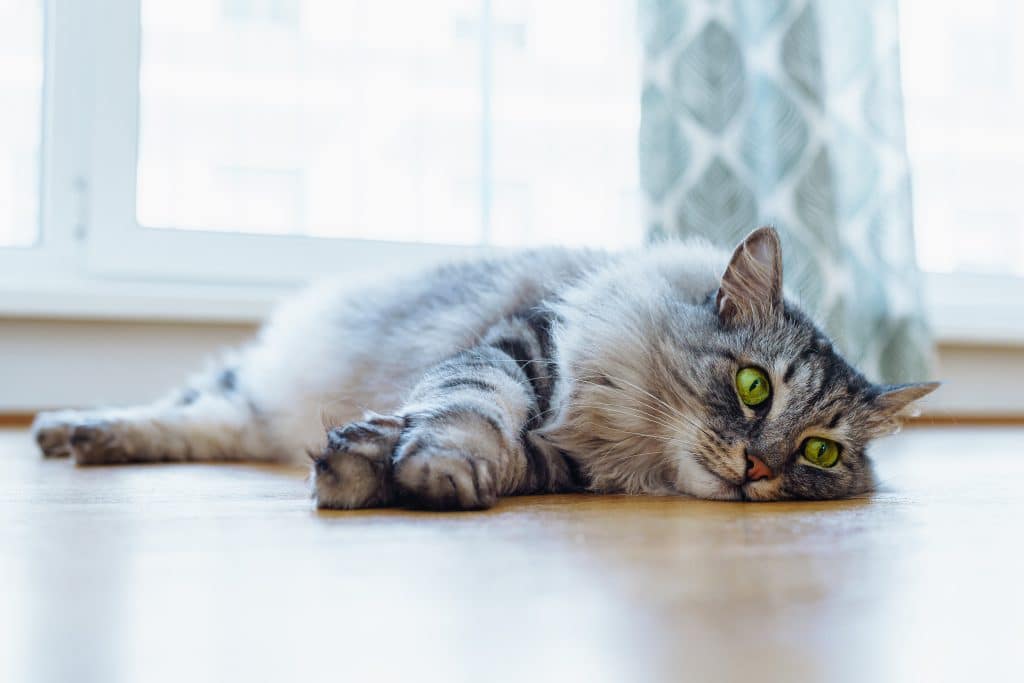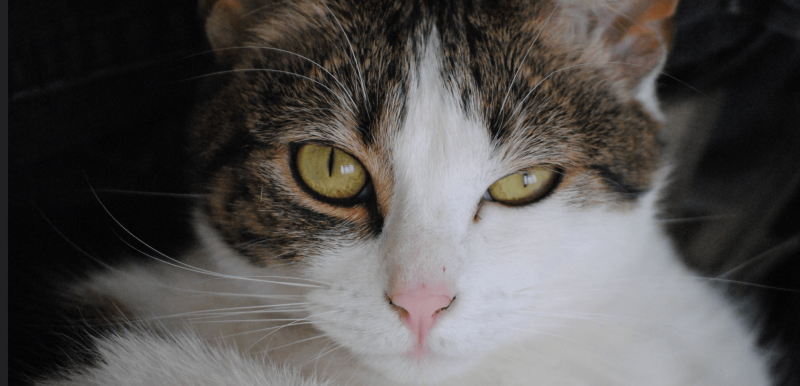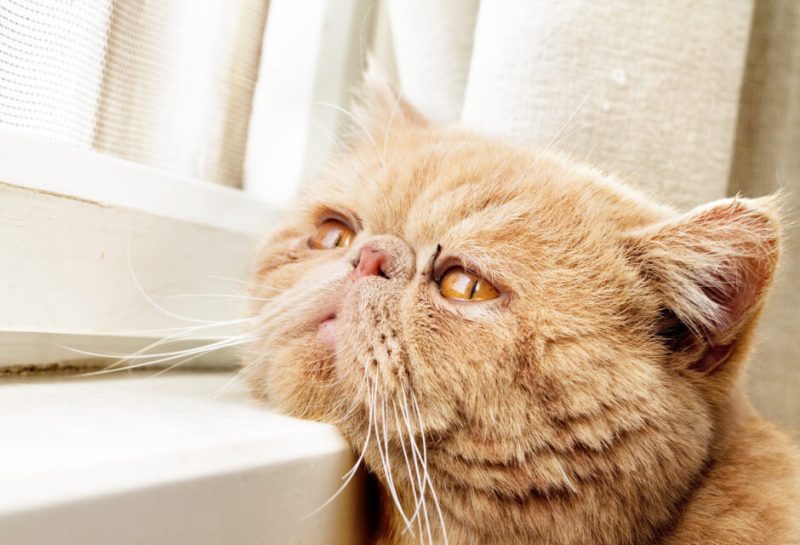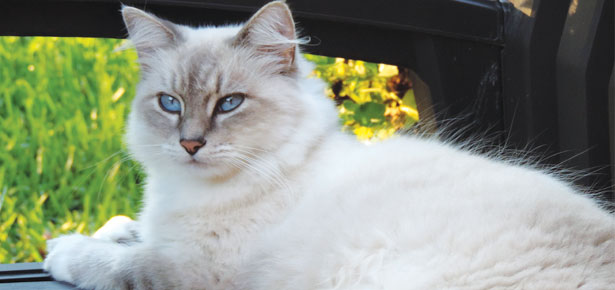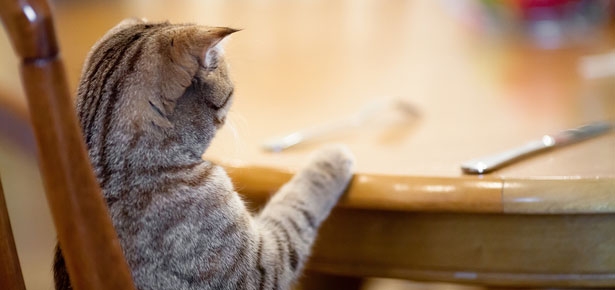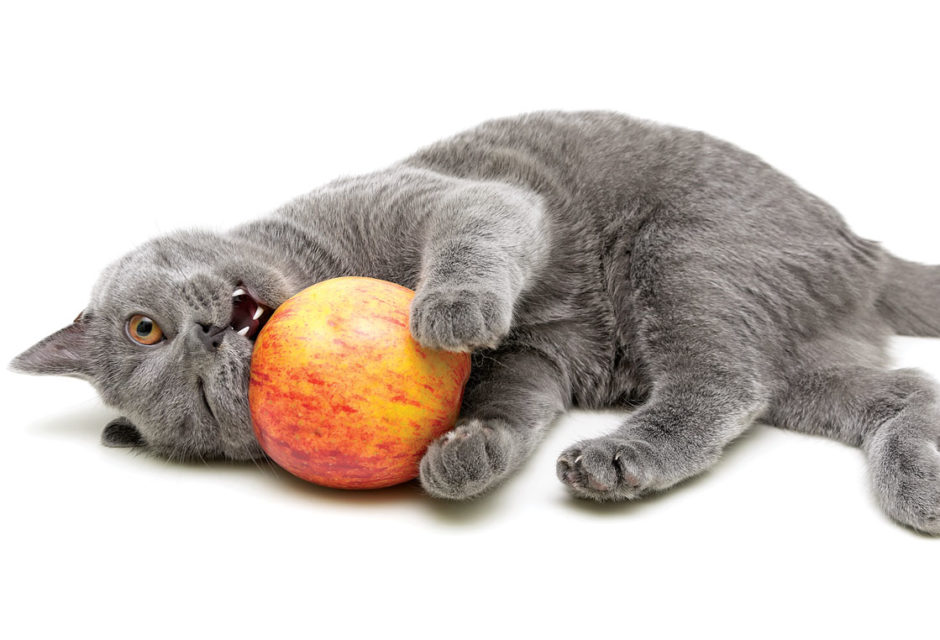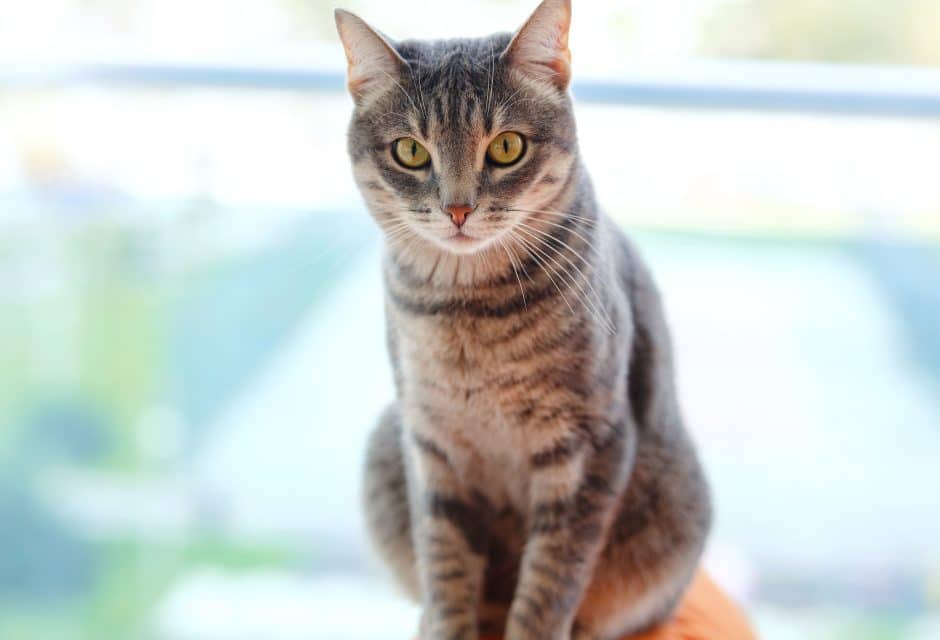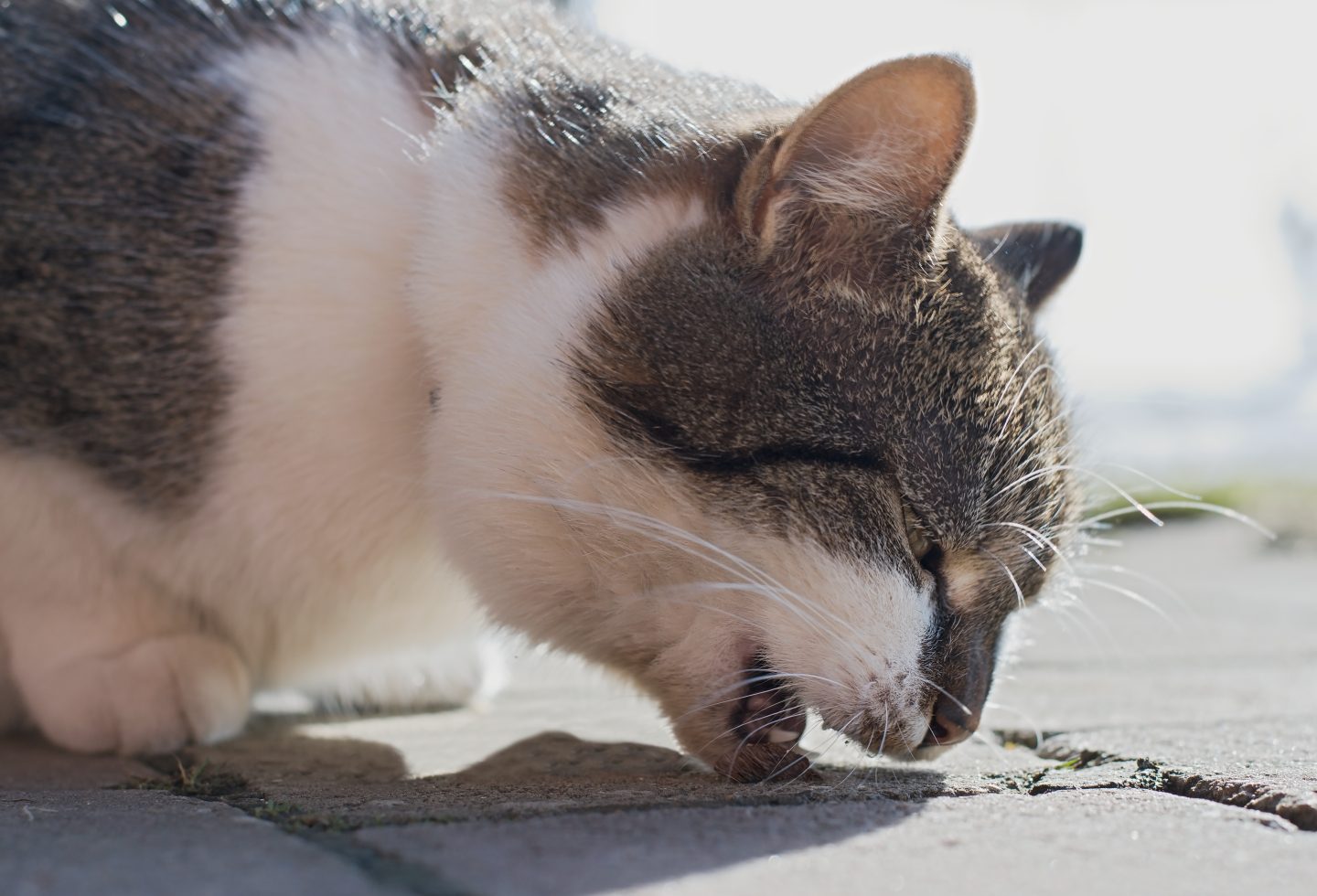
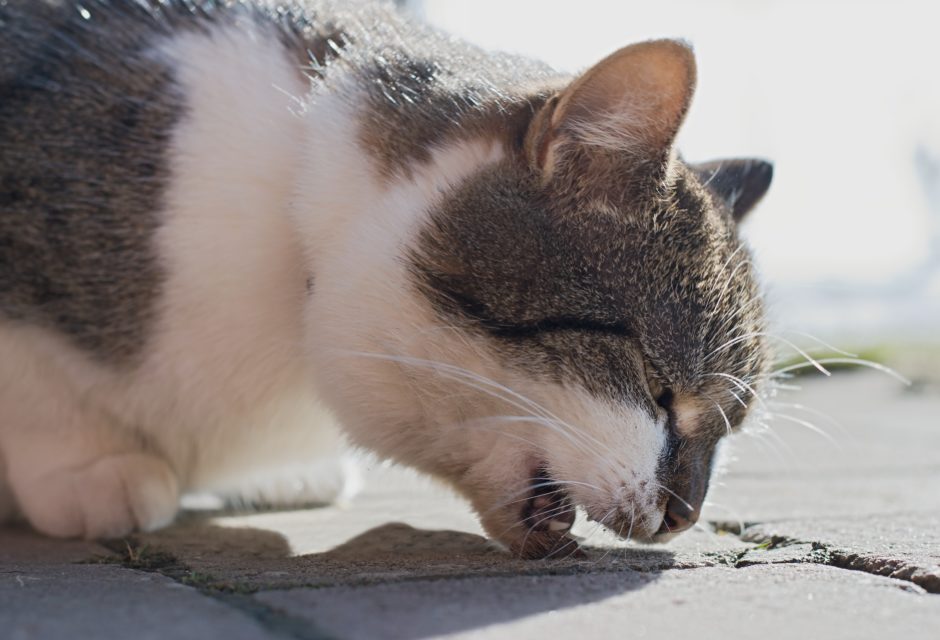
Vomiting: Is it a Cat Thing?
Signs That Vomiting Might Not Be Normal For Your Cat
Vomiting: typical cat! Or is it? For some reason, we believe that it is normal for cats to vomit. “It’s just what they do. It’s part of being a cat.” But it is no more “normal” for them than it is for us. It’s a sign of a problem.
Cats ARE prone to problems that result in vomiting. These include exposure to toxins (from poisons, bacteria, food, or kidney disease), stress, motion sickness, and inflammation of the intestine (inflammatory bowel disease, colitis, constipation), stomach, liver or pancreas.
How should a caring cat parent help their puking puss? If kitty is otherwise well, it isn’t an emergency, however your cat will need help from their doctor if they barf more than once. If your cat is acting ill, get her to the veterinarian quickly. In less urgent cases, your vet may send you home with a dewormer against intestinal parasites or a bland, readily digestible food for a week to sort things out. As part of a thorough examination, your vet will check under your cat’s tongue for string, such as thread or tinsel, that may have accidentally been ingested, causing a sore mouth. (Yes, cats WILL still eat even if their mouth hurts, which may cause them to “binge and barf.”)
In persistent or urgent cases, further workup (blood tests and urinalysis) is needed because the cause of vomiting may be systemic rather than gut related.
The more information you give your vet, the better.
• When did the vomiting first start?
• How often does it happen?
• Is the timing associated with eating? If so, does it occur right after eating or 4-8 hours afterwards? Or is there no relationship to the time of eating? Timing may help suggest the location of the problem.
• What does it look like (colour, quantity, consistency, contents)? Is it clear, colourless liquid or froth? Is it yellow or green? Is there fresh red blood or black coffee ground-like contents? Is it slimy or watery when you wipe it up? Are there worms in it? Does it smell like feces? Appearance can provide clues to the location and cause of the problem. Yellow-green, for example, is bile, indicating possible pancreatitis, liver disease or severe inflammatory bowel disease.
• How much of it is there? (If a puddle, report in inches.) Liquid deposits on carpet make answering that question difficult, but if it is a pile, you can still report the size.
• Can you see semi-digested food in it? What about hair, feathers, grass? Among other things, semi-digested food may indicate poor gastric
motility.
• What does the process look like? (Get out your mobile phone and video it if you can.) Is it preceded by yowling, drooling, lip-smacking and repeated swallowing? If so, that suggests stomach or below. If the process looks less upsetting and the vomit is tubular, it may well be from the esophagus (regurgitation).
• Did the problem start after or around the time of any change in diet?
• Let your vet know if your cat has been receiving any over-the-counter treatments, medications or homeopathic remedies.
• Are any of your other cats sick? Infectious diseases that cause vomiting may also affect the other cats in the home.
Remember to mention anything else that doesn’t seem normal with your cat. Is there any diarrhea, weight loss, coughing, or increase in the amount of urine or drinking? In older cats, changes can occur gradually so you may have to think back one or two years and mentally compare current health to previous energy, temperament, appetite, weight, mobility, etc. In a younger cat, changes
in health tend to be more abrupt. Hairballs (tubular wads of hair) are also not normal! They represent either an abnormal increase in hair ingestion (suggesting stress, itchy skin, or pain) or decreased normal passage of hair (could be caused by inflammation anywhere in the cranial abdomen resulting in decreased motility).
Vomiting always has a cause. Your cat does not enjoy vomiting. Get it checked out.
For more information go to feline-friends.org.uk/vomiting
This article originally appeared in the award-winning Modern Cat magazine. Subscribe today!
Join the newsletter and never miss out on cat content again!
"*" indicates required fields
By clicking the arrow, you agree to our web Terms of Use and Privacy & Cookie Policy. Easy unsubscribe links are provided in every email.





